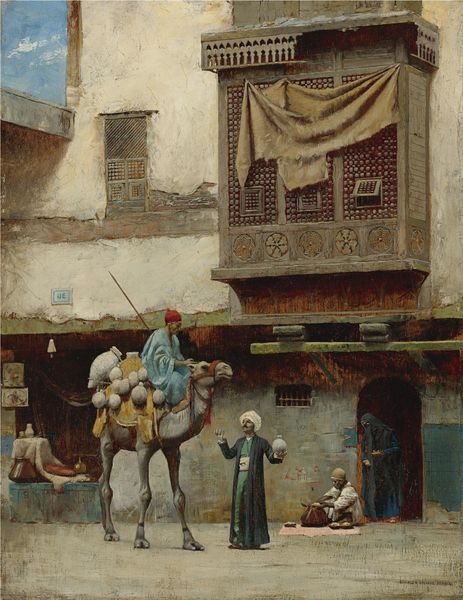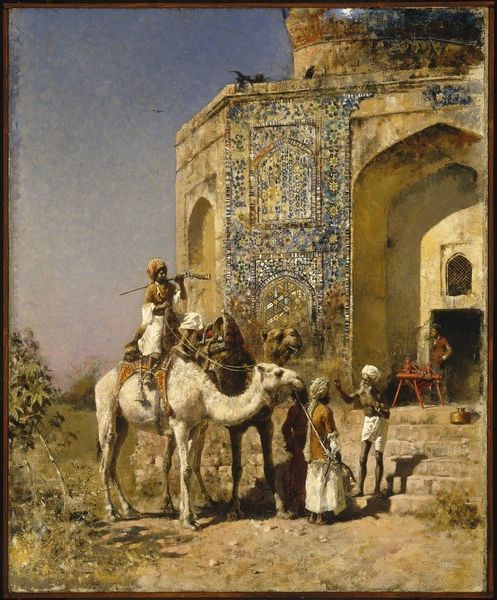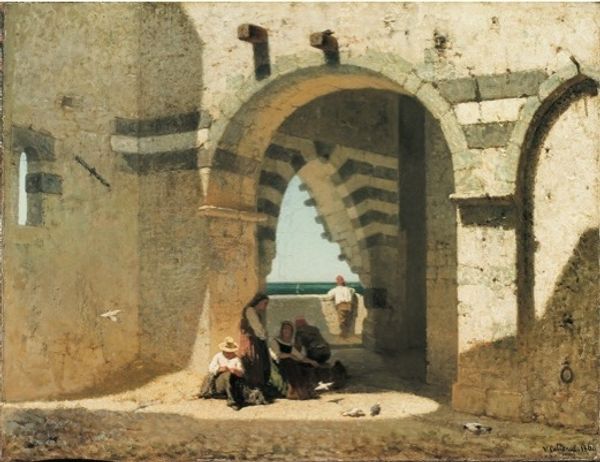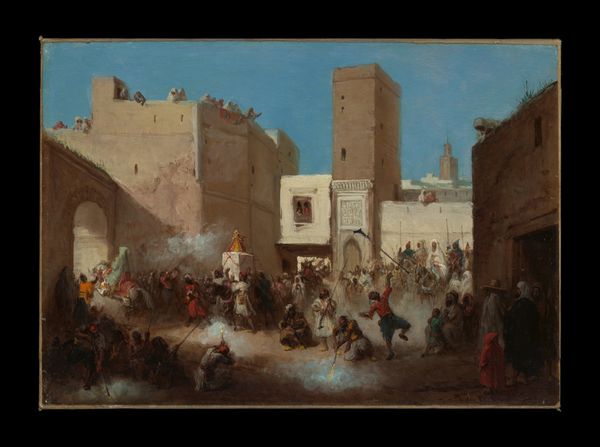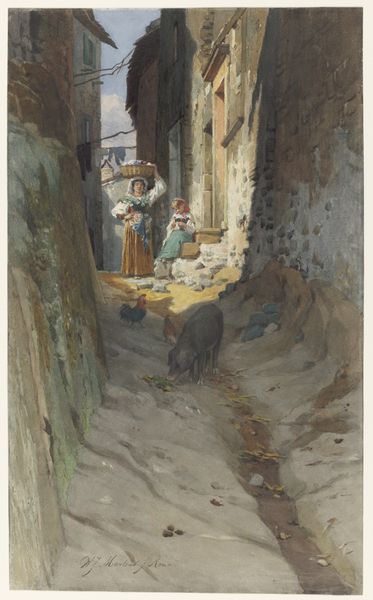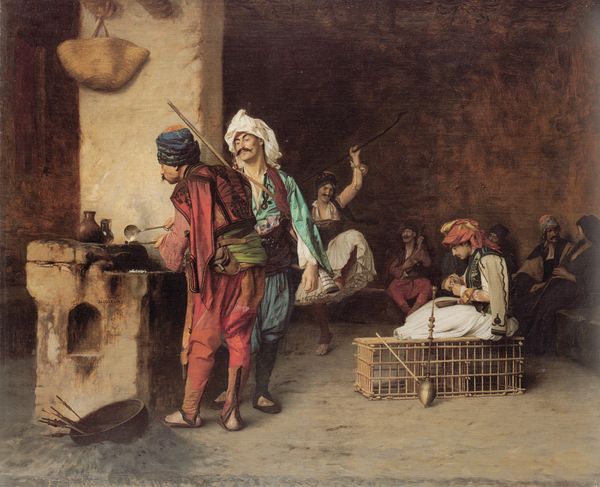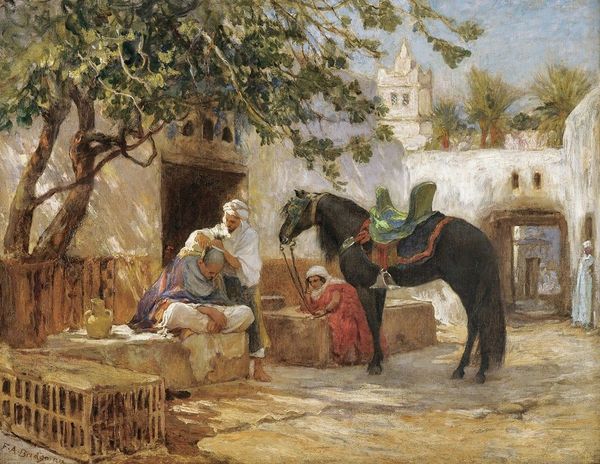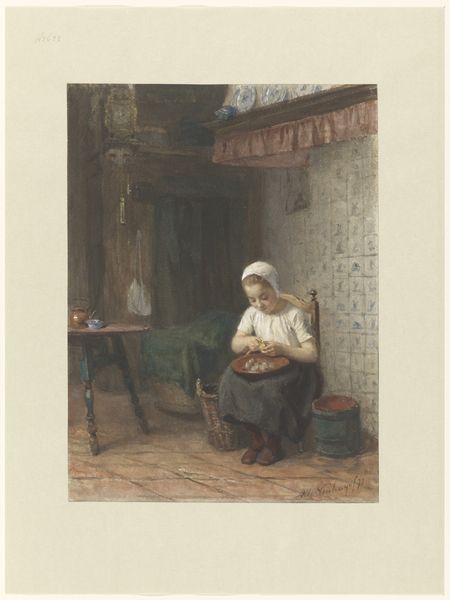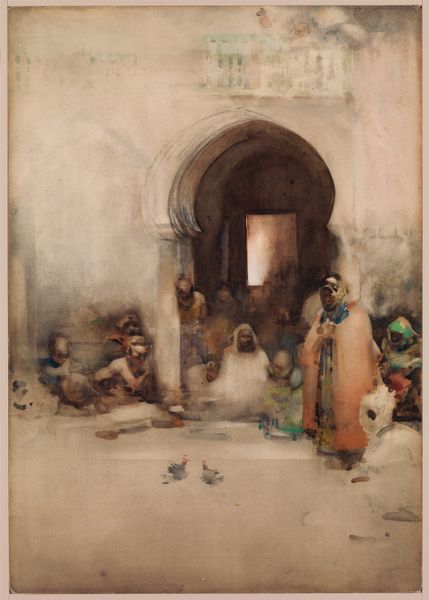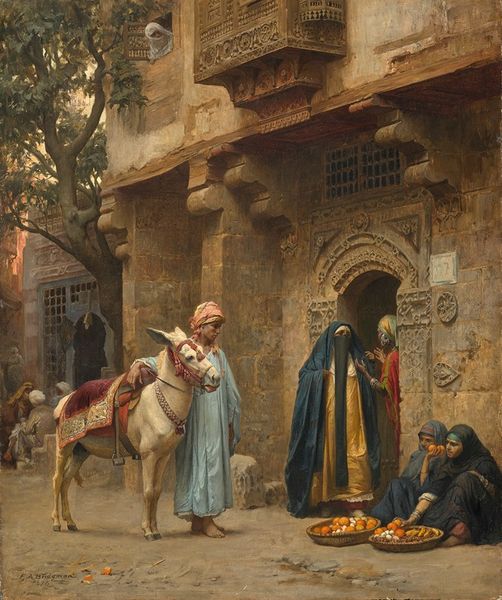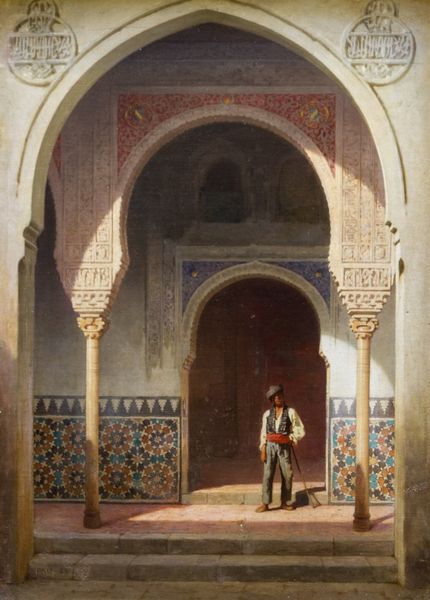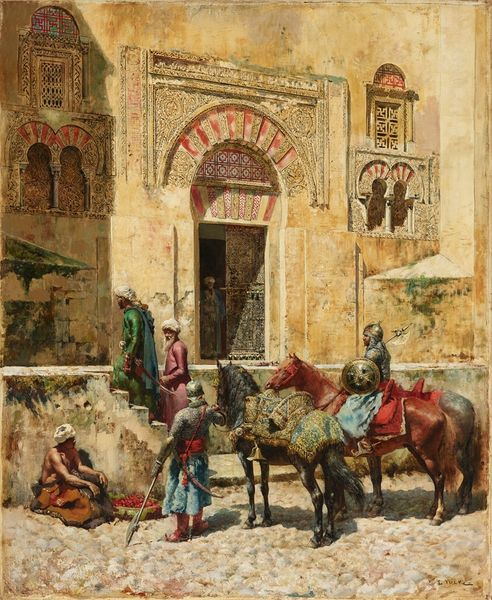
drawing, gouache, watercolor
#
gouache
#
drawing
#
water colours
#
gouache
#
landscape
#
watercolor
#
underpainting
#
orientalism
#
genre-painting
Dimensions: sheet: 15.2 x 13.1 cm (6 x 5 3/16 in.)
Copyright: National Gallery of Art: CC0 1.0
Curator: Here we have "Arab Market," a watercolor and gouache work by Louis Tesson. My immediate reaction is a sense of quiet observation, almost like peering into a private moment within a bustling marketplace. Editor: Yes, a studied orientalist vision that deserves unpacking. Tesson captures this space through the lens of a very specific power dynamic, part of the colonial gaze that exoticized the "Arab world". How does the artist’s use of watercolor contribute to this constructed image? Curator: Precisely! The medium is key. Watercolor and gouache lend themselves to a certain level of detail while simultaneously softening the overall image, perhaps suggesting an almost dreamlike rendering of a distant place. Note the subtle underpainting and how Tesson uses the paper itself to create light and texture. This would have made it reproducible and consumed widely. Editor: Interesting point. The "dreamlike" quality reinforces this idea of constructed otherness, of separating the Arab world from a European understanding of reality. These markets are historically sites of trade but they’re also places of intersectional identity formation for diasporic people. Tesson reduces this into consumable aesthetic pleasure. What stories are missing? Curator: Absolutely. Focusing on the materiality, the light in the image plays such an important role. Notice how it highlights the textures of the architecture and clothing, suggesting a realness while simultaneously veiling the complexities of lived experiences within these markets. Editor: Which brings us back to the absence of laborers’ stories and economic realities! While the light catches beautiful fabrics, it casts shadows on the exploitation inherent in colonial trade routes. The casual arrangement of figures within a landscape flattens historical complexity into a visually appealing scene. We need to recognize and address this artistic strategy. Curator: I concur that it's a depiction through a specific cultural lens. The medium allowed for mass production which facilitated a wider consumption and romanticization of the Orient, while the materials themselves—paper, pigments, brushes—speak to the infrastructure supporting these artistic representations. Editor: I’m reminded of Edward Said's analysis in “Orientalism". To engage with a work like this, we must critically question its implications and biases as a cultural representation of "the other". What kind of collective self-reflection is required of contemporary audiences? Curator: By examining its construction, from the specific layering of paint to its likely modes of distribution, we reveal the process. And acknowledging this constructedness is the first step in opening it up to critical dialogue. Editor: It allows us to be mindful of what this image promotes culturally and challenges us to re-evaluate the relationship we establish and accept through artworks.
Comments
No comments
Be the first to comment and join the conversation on the ultimate creative platform.
